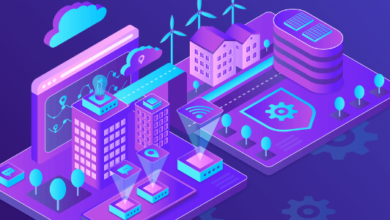What are the security challenges associated with the widespread adoption of cloud computing, and how are they being addressed?

Introduction
As cloud computing continues to transform the IT landscape, organizations are increasingly relying on cloud services for their operational needs. While cloud computing offers numerous advantages, such as cost savings, scalability, and flexibility, it also presents several security challenges. This article delves into the primary security challenges associated with the widespread adoption of cloud computing and the measures being taken to address these challenges.
Understanding Cloud Computing Security
Cloud computing security involves a set of policies, technologies, and controls designed to protect data, applications, and the associated infrastructure of cloud computing. Ensuring the security of cloud services is crucial to safeguard sensitive information and maintain trust in cloud service providers.
Data Breaches and Data Loss
One of the most significant security concerns in cloud computing is the risk of data breaches and data loss. As organizations store vast amounts of sensitive data in the cloud, the potential for unauthorized access increases. Hackers often target cloud services to steal confidential information.
Addressing Data Security
To mitigate data security risks, cloud service providers implement robust encryption methods, both for data at rest and in transit. Additionally, organizations are encouraged to adopt comprehensive data management policies and conduct regular security audits.
Access Management and Identity Control
With the shift to cloud computing, managing user access and identities has become more complex. Ensuring that only authorized users have access to sensitive data is a critical security challenge.
Implementing Access Controls
Solutions such as multi-factor authentication (MFA), single sign-on (SSO), and role-based access control (RBAC) are widely used to strengthen access management. These measures help verify user identities and limit access to authorized personnel.
Compliance and Legal Issues
Cloud computing involves the storage and processing of data across various jurisdictions, raising concerns about regulatory compliance and legal issues. Different regions have distinct data protection laws, complicating compliance efforts for organizations operating globally.
Navigating Compliance Challenges
To address compliance issues, organizations must stay informed about relevant regulations and choose cloud providers that comply with industry standards. Regular audits and legal consultations are also essential to ensure compliance.
Security Misconfigurations
Misconfigurations in cloud settings can lead to significant security vulnerabilities. Incorrectly configured storage buckets, for instance, can expose sensitive data to the public.
Preventing Misconfigurations
Automated security tools that continuously monitor and correct misconfigurations are vital. Organizations should also adopt a principle of least privilege, ensuring that users have only the necessary permissions.
Insider Threats
Insider threats, whether malicious or accidental, pose a substantial risk to cloud security. Employees or contractors with access to sensitive data can compromise security through negligence or intentional misconduct.
Mitigating Insider Threats
Implementing strict access controls, monitoring user activity, and providing regular security training can help reduce the risk of insider threats. Additionally, conducting thorough background checks during the hiring process is advisable.

Shared Responsibility Model
In cloud computing, security responsibilities are shared between the cloud service provider and the customer. Misunderstanding these responsibilities can lead to security gaps.
Clarifying Responsibilities
Organizations should clearly understand and define their security roles and responsibilities in collaboration with their cloud providers. Regularly reviewing and updating these agreements is crucial for maintaining security.
Distributed Denial of Service (DDoS) Attacks
DDoS attacks can disrupt cloud services by overwhelming them with traffic, leading to downtime and potential data breaches.
Defending Against DDoS Attacks
Cloud providers often offer built-in DDoS protection services. Organizations can enhance their defenses by implementing traffic monitoring, rate limiting, and utilizing content delivery networks (CDNs).
API Vulnerabilities
APIs are essential for cloud services, but they can also introduce security vulnerabilities if not properly secured. Unauthorized access to APIs can lead to data breaches and other security incidents.
Securing APIs
Implementing strong authentication mechanisms, using secure coding practices, and regularly testing APIs for vulnerabilities are crucial steps in securing them.
Physical Security
While cloud computing relies on virtual environments, the physical security of data centers remains a critical concern. Physical breaches can lead to data theft and service disruptions.
Enhancing Physical Security
Cloud providers typically invest in advanced physical security measures, such as biometric access controls, surveillance systems, and secure locations for their data centers. Organizations should ensure their providers adhere to these standards.
Virtualization Security
The use of virtual machines (VMs) and hypervisors introduces additional security risks. Vulnerabilities in these virtual environments can be exploited by attackers.
Strengthening Virtualization Security
Regularly updating and patching virtualization software, using hardware-based security features, and isolating VMs can enhance virtualization security.
Incident Response and Disaster Recovery
Effective incident response and disaster recovery plans are essential for minimizing the impact of security incidents and ensuring business continuity.
Developing Robust Plans
Organizations should create detailed incident response and disaster recovery plans, conduct regular drills, and collaborate with their cloud providers to ensure swift and effective responses to incidents.
Many organizations use multiple cloud providers to diversify their risk, but this approach also introduces additional security challenges, such as managing consistent security policies across different platforms.
Implementing unified security management tools and adopting consistent security policies across all cloud environments can help address these challenges.
Emerging Threats in Cloud Computing
As cloud technology evolves, so do the threats. Emerging threats, such as quantum computing and advanced persistent threats (APTs), pose new challenges for cloud security.
Investing in research and development, staying informed about the latest security trends, and collaborating with industry experts are essential strategies for staying ahead of emerging threats.
Conclusion
The widespread adoption of cloud computing presents numerous security challenges, but with the right strategies and solutions, these challenges can be effectively addressed. By understanding the risks, implementing robust security measures, and staying informed about emerging threats, organizations can confidently leverage the benefits of cloud computing while ensuring the security of their data and systems.
FAQs
What are the primary security concerns in cloud computing? Primary security concerns include data breaches, data loss, access management, compliance issues, security misconfigurations, insider threats, and DDoS attacks.
How can data breaches be prevented in cloud computing? Data breaches can be prevented through robust encryption, comprehensive data management policies, and regular security audits.
What is the shared responsibility model in cloud computing? The shared responsibility model in cloud computing refers to the division of security responsibilities between the cloud service provider and the customer.
How can organizations ensure compliance with data protection laws in cloud computing? Organizations can ensure compliance by staying informed about relevant regulations, choosing compliant cloud providers, and conducting regular audits and legal consultations.
What measures can be taken to mitigate insider threats in cloud computing? Mitigation measures include implementing strict access controls, monitoring user activity, providing regular security training, and conducting thorough background checks.
How can multi-cloud security be managed effectively? Multi-cloud security can be managed by implementing unified security management tools and adopting consistent security policies across all cloud environments.





